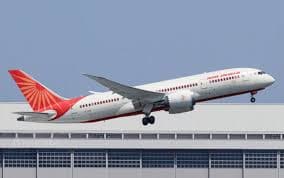The preliminary report of India’s Aircraft Accident Investigation Bureau (AAIB) into the deadly Air India flight crash has initiated a furore of indignation within the pilot community and raised fresh questions on flight systems, cockpit communication, and investigation objectivity.
The crash, which claimed 260 lives, including passengers and those on the ground, on June 12, after a Boeing 787 Dreamliner crashed minutes after takeoff from Ahmedabad, has its main contention that both engine fuel switches were inexplicably turned to “CUTOFF” from “RUN” seconds into flight generated a controversial debate regarding whether this points to human error, a failure of the cockpit systems, or something more sinister.
The Report’s Main Finding: Fuel Starvation Led to the Crash
According to the AAIB report, the aircraft experienced a total loss of engine thrust around 30 seconds into takeoff. Black box recordings show that both fuel cutoff switches were turned to the “off” position during the climb, and both engines shut down in mid-air. The aircraft crashed into a densely populated housing area, nose-diving and resulting in the deaths of everyone on board and 19 individuals on the ground, despite attempts by the flight crew to restart the engines.
The cockpit voice recorder (CVR) recorded a perplexed and strained dialogue between both pilots during the final seconds. One can be heard saying, “Why did he cut off the fuel?” and the other replies in shocked denial: “I didn’t touch it!”

This audio clip has been the most controversial part of the report with grave implications for cockpit behavior, automation, and possible equipment design flaws.
Pilots’ Union Indignation: ‘Premature and Biased’
The Airline Pilots’ Association of India (ALPA-I) was prompt to respond to the report, issuing a scathing statement that alleged the AAIB had rushed to conclusions and was peddling a narrative line that indirectly blames the pilots without conclusive evidence.
This interim report is speculative, one-sided, and technically opaque,” ALPA-I President Captain Rajeev Suri said. “To suggest pilot error when cockpit recordings themselves show confusion and denial is unjust. The report fails to consider the possibility of mechanical failure, switch design problems, or even a possible software fault.
The union has demanded that independent international experts be part of further investigative stages and that full cockpit transcripts, flight data, and Boeing’s in-house technical records be released.
Design Flaw or Human Error?
At the root of the controversy is the fuel switch system on the Boeing 787 a mechanism that has protective locks specifically intended to prevent accidental activation.
A 2018 Federal Aviation Administration (FAA) bulletin had warned of potential issues with the locking mechanism on the same aircraft model. Though the FAA did not mandate corrective action, it recommended that airlines inspect and reinforce safeguards.
It has now been revealed that Air India never conducted those voluntary checks on the plane involved in the June crash.
Aviation analyst Anita Das, who reviewed the report, called the simultaneous deactivation of both engines “highly unusual,” stating: “The switches require deliberate pressure and motion to engage. That both were deactivated at the same time during takeoff leaves more questions than answers.”
Families Demand Wider Inquiry, Brand Report a ‘Cover-up’
Families of the victims have also reacted in anger, accusing investigators of cockpit blame-shifting while ignoring systemic issues. Families held a press conference in Mumbai where they read out open letters addressed to the Directorate General of Civil Aviation (DGCA) and the Ministry of Civil Aviation, demanding accountability beyond the flight crew.
We lost our loved ones mothers, fathers, children and now we’re watching them try to scapegoat two pilots who can’t defend themselves,” said Priya Kulkarni, whose sister died. “Why aren’t they examining the airline’s maintenance records, or Boeing’s design?
Family members of some of the victims have threatened to sue if the final report doesn’t include a broader technical audit, including switch ergonomics, digital fail-safes, and cockpit human-factor stress analysis.
Boeing and GE Respond: ‘Cooperating Fully’
Both Boeing, the manufacturer of the plane, and GE Aviation, the manufacturer of the 787’s engines, have issued statements that they are cooperating with Indian authorities. Boeing noted that its airplanes are designed and certified to international certification standards and that the report is still preliminary.
Behind the scenes, however, aviation sources say the two companies are preparing for a possible avalanche of legal and regulatory scrutiny, particularly if the switches are found to be inadequately protected against accidental operation.
Final Report Still Months Away
AAIB officials have described this preliminary report as inconclusive and said that complete system diagnostics, simulations, and reviews of airline safety procedures will be included in the final investigative report.
“All options are still on the table,” one official engaged in the investigation said. “Our job is not to assign blame but to make sure such tragedies never occur again.”
But the damage may already be completed. With trust between pilots, regulators, and the flying public now shattered, the episode has also sparked a broader debate of how air crashes are examined — and who is at fault when contemporary aviation systems fail most catastrophically.
What Happens Next?
While the world aviation industry holds its breath, the subsequent key developments can be expected in the months ahead:
- An official Boeing reaction to the fuel switch design and cockpit safety systems.
- A possible independent panel examination, as demanded by ALPA-I and families of victims.
- Pressure on Indian regulators to become more transparent and introduce third-party oversight.
- Potential legal action against Air India for its failure to implement previous safety suggestions.
In a year already marred by heightened monitoring of aviation safety ranging from software glitches in cabins to pilot fatigue scandals the Air India crash may prove to be a turning point for systemic change.
Read Recent News
Plane Crash in Russia Kills Dozens
Trump Threatens EU, Mexico with 30% Tariffs, Sets Global Trade Community on High Alert
Federal Agents Clash with Protesters During Raid on Camarillo-Area Cannabis Garden
Kyiv Ablaze After Mass Overnight Drone and Missile Strike by Russian Forces
